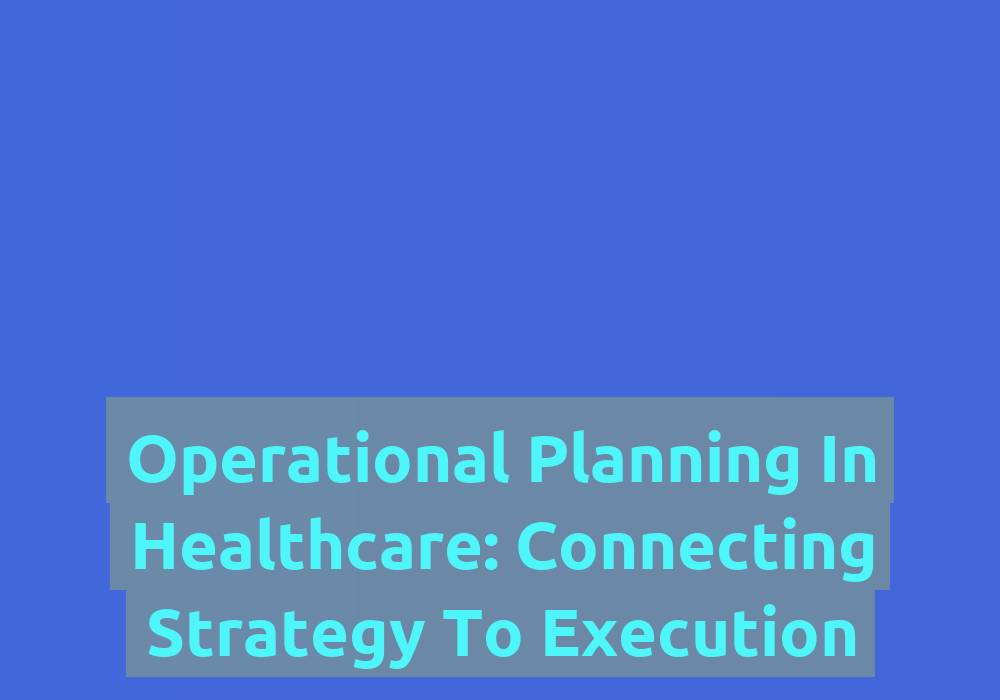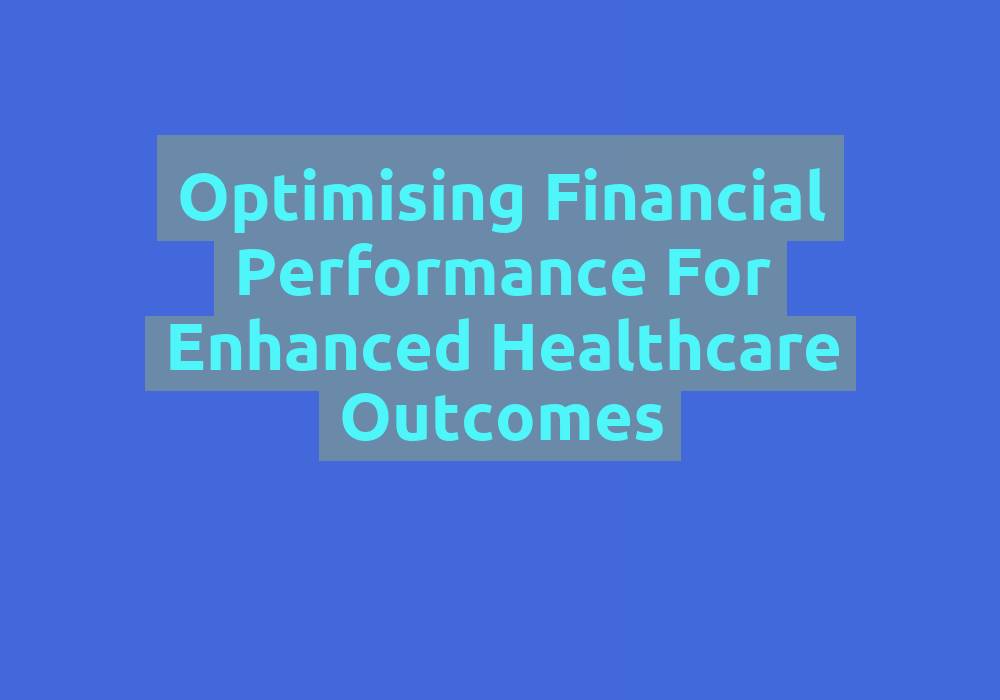Choosing a Location for Your UK Healthcare Business
Comprehensive Insights into the UK Healthcare Market
What Key Factors Shape Healthcare Demand in the UK?
The demand for healthcare services in the UK arises from a complex interplay of various elements, primarily influenced by demographic changes and local health requirements. Gaining a deep understanding of these factors is essential when determining the optimal location for your healthcare business. Significant determinants include:
- Population demographics: The age distribution, gender ratios, and ethnic diversity within a population can profoundly affect the demand for healthcare services.
- Health needs: The prevalence of chronic conditions, mental health issues, and specific health risks can vary markedly across different regions.
- Existing healthcare infrastructure: The availability and capacity of local hospitals, clinics, and specialist providers can either saturate the market or generate a need for additional healthcare services.
- Socioeconomic factors: The income levels, employment rates, and education of a community influence individuals’ ability and willingness to seek healthcare.
- Geographic considerations: The differences between rural and urban settings present unique healthcare challenges and opportunities.
- Local health policies: Shifts in government policies can significantly alter demand, particularly regarding funding and the availability of services.
- Public health initiatives: Local campaigns and preventive measures can create temporary spikes in healthcare needs.
- Community awareness: The level of health literacy and community engagement can influence how frequently individuals seek care.
Analysing these factors provides valuable insights into regions where healthcare services are most urgently needed, enabling you to make well-informed choices regarding the location of your business.
How to Evaluate Competition Across Various Regions
Understanding the competitive landscape is crucial for identifying the most advantageous location for your healthcare business. By assessing existing providers in different regions, you can gauge the level of market saturation and pinpoint gaps in available services. Key competitors to consider include:
- NHS services: The presence and capacity of local NHS hospitals and clinics play a significant role in shaping competitive dynamics.
- Private healthcare providers: Investigate established private hospitals and clinics that may dominate the local market.
- Specialist providers: Identify niche healthcare businesses that target specific treatments or demographics.
- Multi-disciplinary practices: Facilities that offer a range of services can present formidable competition.
- Emerging telehealth services: Digital healthcare providers are increasingly favoured, especially in urban areas.
- Pharmacies offering healthcare services: Many local pharmacies provide healthcare services, competing for patient attention.
- Community health initiatives: Local health promotion organisations may deliver services that impact overall demand.
- Alternative medicine practitioners: Complementary and alternative therapies may draw patients away from conventional healthcare options.
A thorough analysis of these competitors will help you ascertain the viability of your preferred location, revealing any service gaps that your business has the potential to fill.
Identifying Trends Impacting UK Healthcare Services
Staying attuned to the latest trends in the UK healthcare sector is vital for optimally positioning your business. Emerging trends can profoundly influence both your choice of location and the services you provide. Noteworthy trends include the upsurge in telemedicine, which has broadened access to healthcare and rendered it feasible to operate in less densely populated areas. Furthermore, specialised care units, particularly those concentrating on mental health or chronic disease management, are increasingly gaining traction due to heightened awareness of these concerns.
The integration of technology into healthcare practices is another crucial trend to consider. This encompasses the use of electronic health records and patient management systems, which enhance service delivery and patient experiences. Additionally, the movement towards preventive care is reshaping healthcare delivery, prompting businesses to place greater emphasis on education and community engagement.
Understanding these trends will inform your strategic planning, allowing you to align your services with the current and future needs of the market.
Key Regulatory Considerations for Healthcare Business Locations in the UK
What Licensing Requirements Must Healthcare Facilities Meet?
In the UK, setting up a healthcare business requires adherence to specific licensing and regulatory stipulations to ensure patient safety and the quality of services provided. The Care Quality Commission (CQC) oversees healthcare providers, and understanding the essential licensing procedures can streamline your setup process. Key licensing steps include:
- Registration with the CQC: All healthcare providers must register to operate legally within the UK.
- Compliance checks: You must demonstrate adherence to essential standards of care and safety.
- Inspection readiness: Be prepared for CQC inspections that assess service quality and patient safety measures.
- Staff qualifications: Ensure that all personnel possess the necessary qualifications and training credentials.
- Policies and procedures: Develop comprehensive policies governing service delivery, patient care, and staff conduct.
- Insurance requirements: Secure appropriate liability insurance for your healthcare practice.
- Data protection compliance: Follow GDPR regulations concerning patient data management and confidentiality.
- Local authority approvals: Investigate any additional local regulations that may affect your operations.
Successfully navigating these licensing requirements will establish your healthcare business as a compliant and trustworthy provider in the market.
Ensuring Compliance with Health and Safety Regulations
Adhering to health and safety regulations is not merely a legal requirement; it is fundamental to delivering quality patient care. Selecting a location that complies with UK health and safety standards safeguards both patients and staff. Regulatory bodies, including the Health and Safety Executive (HSE), enforce standards that regulate various aspects of healthcare operations.
Your facility must possess an effective health and safety policy, conduct regular risk assessments, and provide comprehensive training for staff regarding emergency procedures. This includes ensuring that the building is safe, accessible, and equipped with the necessary safety features, such as fire exits, handrails, and first aid equipment.
Moreover, consider the implications of infection control regulations, especially relevant in healthcare settings following the COVID-19 pandemic. Regular audits and checks are essential to maintain compliance and adapt to evolving regulations. Ensuring that your chosen location meets all health and safety requirements is vital for establishing a reputable healthcare business.
How Does Zoning Influence Healthcare Business Locations?
Zoning laws in the UK are critical considerations when selecting a location for your healthcare business. These regulations determine where different types of businesses can operate, influencing not only the feasibility of your chosen site but also its accessibility for patients and staff. Zoning can dictate:
- Type of facility allowed: Certain zones may restrict the type of healthcare services you can provide, such as outpatient versus inpatient care.
- Building requirements: Zoning laws may impose specific architectural standards that your facility must comply with.
- Parking and accessibility: Regulations may govern the number of parking spaces and access routes for patients with disabilities.
- Operating hours: Some zones may restrict your operating hours, affecting patient availability.
- Proximity to other services: Zoning can affect your location’s accessibility to complementary healthcare providers and amenities.
- Community impact assessments: You may need to demonstrate how your business will affect local traffic and community resources.
- Environmental considerations: Some zones may have specific requirements to protect local wildlife or mitigate pollution.
- Local council approvals: Engage with local councils to comprehend zoning impacts and secure necessary approvals.
Understanding the zoning landscape is vital to avoid potential legal complications and ensure your healthcare business is strategically positioned for success.
What Environmental Regulations Affect Healthcare Sites?
Environmental regulations significantly influence the establishment and operation of healthcare facilities in the UK. These regulations are intended to promote sustainable practices and diminish the ecological footprint of healthcare operations. Key environmental considerations include:
- Waste management: Proper disposal and management of medical and hazardous waste are crucial for compliance with environmental laws.
- Energy efficiency standards: New healthcare facilities must adhere to regulations promoting energy conservation and reducing carbon emissions.
- Water usage: Facilities must comply with regulations governing water usage, especially in regions facing scarcity.
- Air quality standards: Ensure that your facility meets emissions and air quality standards, particularly when using specific medical equipment.
- Environmental impact assessments: Major healthcare projects may necessitate an assessment to evaluate their potential environmental effects.
- Community impact: Engage with local communities to address concerns about environmental practices and sustainability initiatives.
- Compliance audits: Regular audits will ensure adherence to environmental regulations and highlight areas for improvement.
- Green certifications: Consider pursuing certifications recognising environmentally friendly practices, enhancing your business’s reputation.
Compliance with environmental regulations not only ensures legality but can also improve your healthcare business’s reputation and operational efficiency.
Expert Guidance on Selecting a Location for Your Healthcare Business
Real-World Examples of Successful UK Healthcare Locations
Examining case studies of successful healthcare businesses in the UK provides invaluable insights into choosing optimal locations. For instance, the transformation of healthcare services in areas like Surrey illustrates that understanding local needs and demographics can lead to success.
A prominent example is a small private clinic in Guildford that successfully established itself by focusing on physiotherapy and rehabilitation services. The clinic strategically chose its location based on the high demand for post-operative care in the area, along with a growing elderly population. By aligning its services with local health necessities, the clinic attracted a steady stream of patients, ultimately expanding its facility to accommodate additional services.
To replicate such success, consider actionable steps like conducting thorough market research to assess local health needs, engaging with community leaders to identify service gaps, and aligning your services with existing competition. By learning from these successful examples, you can make informed decisions about your healthcare business’s location.
What Makes a Location Attractive to Healthcare Professionals?
Attracting skilled healthcare professionals to your business location is essential for maintaining high service standards. Several factors can enhance a location’s appeal to potential staff.
Firstly, proximity to residential areas is vital, allowing healthcare professionals to commute conveniently. Areas with good transport links, including train stations and bus routes, improve accessibility. Furthermore, the availability of local amenities—such as shops, schools, and recreational facilities—can greatly influence staff satisfaction and retention rates.
Consider also the local culture and sense of community. Locations that foster a supportive environment for healthcare professionals can improve job satisfaction and lower turnover rates. These elements not only aid in recruitment but also promote a positive workplace atmosphere, directly affecting the quality of care provided.
Additionally, offering competitive salaries and benefits is crucial for attracting top talent. Coupled with an appealing workplace culture, this can position your healthcare business as an attractive option for professionals in the field.
Providing Expert Analysis on the Impact of Local Demographics
Local demographics profoundly influence the success of your healthcare business. Understanding the specific characteristics of the population you serve can inform your services and marketing strategies effectively.
Factors such as age distribution are particularly significant. A region with a high proportion of elderly residents may necessitate more geriatric care services, while younger populations may demand more reproductive health and paediatric services. Income levels also play a crucial role; areas with higher disposable income may be more receptive to private healthcare options, while lower-income regions may rely more heavily on NHS services.
Health statistics are another critical aspect to consider. Regions with high incidences of chronic diseases may indicate a need for specialised healthcare services. By analysing these demographic factors, you can tailor your services to meet the unique needs of your patient population, ensuring that your business remains relevant and effective.
Financial Considerations for UK Healthcare Business Locations
Evaluating Property Costs Across Different UK Regions
Property costs in the UK can vary significantly, impacting your budget and overall profitability. Urban areas, particularly London, generally exhibit much higher property prices compared to rural regions. Understanding these cost disparities is crucial for making informed decisions regarding the location of your healthcare business.
When assessing property costs, consider whether leasing or purchasing is more financially viable. Leasing may provide flexibility and lower upfront costs, while buying property can offer greater stability as a long-term investment.
Conduct thorough market research to compare property options in various regions, focusing on aspects such as square footage, location benefits, and local amenities. It is essential to balance the cost with the location’s attractiveness and accessibility to patients. Moreover, account for ongoing expenses like maintenance, service charges, and utilities, which can vary by location and significantly influence your financial planning.
By carefully evaluating property costs, you can make strategic decisions that align with your business objectives while ensuring financial sustainability.
How Do Operating Costs Differ by Location?
Operating costs constitute a critical consideration when choosing a location for your healthcare business, directly affecting your overall financial strategy. These costs can differ significantly by region, influenced by factors such as local wage rates, utility prices, and taxation.
For example, urban centres may incur higher staffing costs due to increased demand for skilled professionals, whereas rural areas might encounter challenges in attracting qualified staff, potentially leading to higher recruitment expenses. Additionally, utilities such as electricity and water may be more costly in metropolitan areas, further straining your operating budget.
Maintenance and overhead expenses can also vary based on your location. Areas with a higher cost of living may necessitate more significant allocations for upkeep and repairs to maintain a quality facility. Consider conducting a detailed analysis of operating costs in potential locations to develop accurate financial forecasts and create a sustainable business model.
By comprehending these variances, you can strategically plan your budget, ensuring that your healthcare business remains financially viable.
What Tax Incentives Are Available for Healthcare Businesses in the UK?
Exploring available tax incentives and grants can significantly mitigate the costs associated with establishing your healthcare business in the UK. Various government schemes exist to support healthcare providers, particularly those that contribute to local health needs and community services.
One notable incentive is the capital allowances scheme, which allows businesses to claim tax relief on qualifying capital expenditures, including equipment and facilities. Additionally, regions designated as “enterprise zones” may offer reduced business rates or other financial incentives to attract healthcare providers.
Local councils may also provide grants or funding to support healthcare initiatives, particularly those aimed at enhancing community health or addressing specific local needs. Engaging with local business support organisations can help you identify these valuable opportunities.
By effectively leveraging tax incentives, you can improve your financial standing, allowing for further investment in your healthcare services and ensuring long-term sustainability.
Accessibility and Transport Links in the UK
Why Public Transport Accessibility Is Crucial
The accessibility of public transport plays a pivotal role in the success of your healthcare business. Ensuring that your facility is easily reachable via buses, trains, or trams is essential for catering to patients who depend on these transport modes.
Locations with robust public transport links enhance patient accessibility, making it easier for them to attend appointments and access essential services. Evaluate the availability of nearby transport options, including their frequency and proximity to your facility. Furthermore, consider the demographics of your patient base; areas with higher proportions of elderly or low-income individuals may particularly benefit from accessible public transport options.
Strong public transport connections can also improve staff recruitment and retention, as healthcare professionals are more likely to work in locations that provide convenient commuting options. Investing in a location with excellent public transport accessibility can significantly enhance the overall experience for both patients and staff.
What Are the Advantages of Proximity to Major Roads?
Being located near major roads offers significant advantages for your healthcare business, improving overall accessibility for both patients and staff. Proximity to key transport routes can reduce travel time, making it easier for patients to attend appointments, especially those with mobility challenges or time constraints.
Moreover, easy access to major roads can streamline logistics for supplies and the transportation of medical equipment. This convenience can lead to smoother operational processes, minimising delays in service delivery.
Additionally, locations near busy roads often enjoy higher visibility, which can enhance your marketing efforts and attract more patients. However, it is essential to balance visibility and accessibility with potential noise and congestion issues that may arise from being situated on a major thoroughfare. Choosing a location that combines these elements can significantly bolster your business’s success.
Evaluating Parking Facilities at Potential Locations
Sufficient parking facilities are a critical consideration for any healthcare business, particularly in areas with limited public transport options. Patients and staff alike require convenient parking solutions to ensure easy access to your facility.
When assessing potential locations, evaluate the availability of parking spaces, taking into account factors such as expected patient volume and peak hours. Adequate parking not only enhances patient satisfaction but also contributes to staff retention by providing convenient access.
Be aware of local regulations regarding parking requirements, as some areas may impose specific mandates on the number of spaces per patient or staff member. If parking is limited, consider whether the site can accommodate future expansion or additional parking solutions. Prioritising locations with ample parking facilities can lead to a more seamless patient experience and increased operational efficiency.
Assessing the Impact of Local Transport Infrastructure Projects
Local transport infrastructure projects can significantly affect the accessibility and viability of your healthcare business location. Evaluating upcoming roadworks, public transport expansions, or new cycling paths is vital for understanding how these developments may impact patient access.
Infrastructure projects can lead to increased traffic congestion during construction phases but may ultimately enhance accessibility once completed. Staying informed about these developments can help you anticipate potential disruptions and adjust your operational strategies accordingly.
Consider engaging with local planning authorities to gain insights into the timelines and impacts of these infrastructure projects. This proactive approach can position your healthcare business to benefit from improved access and visibility once the enhancements are finished, ensuring long-term success.
What Strategies Can Improve Accessibility for Disabled Patients?
Implementing effective strategies to enhance accessibility for disabled patients is not only a legal obligation but also a moral responsibility. Improving accessibility can significantly elevate the patient experience, fostering loyalty and trust in your healthcare services.
Start by ensuring compliance with the Equality Act 2010, which mandates that businesses provide equal access to services for individuals with disabilities. This includes installing ramps, lifts, and accessible restrooms in your building.
Consider incorporating features such as clear signage, designated parking spaces, and sensory-friendly environments to accommodate patients with varying disabilities. Training staff is also crucial; equipping your team with knowledge about disability awareness can contribute to a more inclusive atmosphere.
Engaging with local disability advocacy groups can provide valuable insights and feedback on how to enhance accessibility. By prioritising these strategies, your healthcare business can improve inclusivity and expand its patient base.
Community and Patient Base Considerations
How to Engage with Local Communities in the UK
Building strong relationships with local communities is fundamental to the success of your healthcare business. Engaging with community members fosters trust and enhances your business’s reputation, ultimately leading to a more stable patient base.
Consider hosting community health events, workshops, or free health screenings to raise awareness of your services and establish your presence in the area. These initiatives not only showcase your commitment to local health but also provide valuable networking opportunities with community leaders and organisations.
Utilising local social media platforms and newsletters can further enhance your outreach efforts. Sharing success stories, patient testimonials, and health tips can position your healthcare business as a trusted resource within the community. By actively engaging with local residents, you can create a robust sense of connection and loyalty, benefiting both your business and the community.
What Are the Specific Needs of the Local Patient Population?
Understanding the distinct health needs of the local population is paramount for delivering effective healthcare services. Conducting thorough research to identify prevalent health issues, demographics, and community preferences will allow you to tailor your offerings accordingly.
For instance, if your targeted area has a high incidence of diabetes or obesity, consider prioritising preventive care measures or specialised services aimed at managing these conditions. Similarly, if the local population is predominantly elderly, expanding services like geriatric care or rehabilitation may be advantageous.
Engaging with community health assessments and collaborating with local organisations can provide valuable insights into patient needs. By aligning your services with local health requirements, you can enhance patient satisfaction and improve health outcomes, establishing your healthcare business as an indispensable community resource.
How Can You Collaborate with Other Local Healthcare Providers?
Forming collaborative partnerships with other local healthcare providers can create a more integrated healthcare ecosystem, benefiting both your business and the community. Establishing alliances can enhance referral networks, improve service delivery, and foster comprehensive care for patients.
Consider collaborating with local hospitals, specialist clinics, and community health organisations to create a holistic approach to patient care. Joint initiatives, such as health fairs or shared resources, can enhance visibility and attract new patients.
Additionally, regular communication and networking with other providers can lead to fruitful collaborations on research, training, and shared services. By working together, local healthcare providers can more effectively address community health challenges, ultimately improving patient outcomes and satisfaction.
How Can Community Feedback Enhance Your Services?
Collecting and acting upon community feedback is essential for refining your healthcare services to better meet local needs and expectations. Establishing channels for patient and community input can enhance service delivery and foster loyalty.
Implementing patient satisfaction surveys, suggestion boxes, and community forums can facilitate open communication. These platforms allow patients to voice their concerns, share experiences, and propose improvements, providing valuable insights into service gaps and emerging health needs.
Taking action based on this feedback demonstrates your commitment to patient-centred care, fostering trust within the community. Regularly reviewing and adapting your services based on patient input ensures that your healthcare business remains relevant and responsive to local needs, enhancing overall satisfaction and retention.
Strategies for Enhancing Patient Retention
Implementing effective strategies to boost patient retention is crucial for building a stable and growing patient base. Fostering strong relationships with patients can lead to loyalty and a positive reputation.
Start by ensuring exceptional customer service, providing a welcoming environment, and maintaining clear communication throughout the patient journey. Regular follow-ups and health reminders can bolster patient engagement and promote ongoing care.
Additionally, consider introducing loyalty programmes or incentives for returning patients to encourage repeat visits. Engaging patients through educational content, newsletters, and health events can enhance their connection to your healthcare business.
By prioritising these strategies, you can cultivate a loyal patient base, ensuring your healthcare business thrives in a competitive landscape.
Proven Strategies for Choosing a Location for Your Healthcare Business
Conducting Comprehensive Market Research
Conducting meticulous market research is essential for identifying the most suitable locations for your healthcare business in the UK. Start by defining your target market and gathering data on local demographics, health needs, and existing services.
Utilise surveys, focus groups, and interviews to collect insights from potential patients and local stakeholders. Furthermore, analysing competitor services and patient satisfaction can yield valuable information on market gaps.
Leverage online resources, such as health statistics and economic reports, to contextualise your findings and identify emerging trends. By synthesising this data, you can make informed decisions about the most promising locations for your healthcare business, ensuring alignment with community needs.
What Are the Best Practices for Site Selection?
Adhering to industry best practices for site selection can significantly impact the success of your healthcare business. Begin by evaluating criteria such as visibility, accessibility, and proximity to complementary services.
Consider how well the location aligns with your target demographic, ensuring that it meets the needs of potential patients. Assessing local competition is crucial; choosing a site with adequate market demand and limited saturation can enhance your business’s viability.
Engage with local stakeholders and authorities to comprehend zoning regulations and community expectations. Conducting feasibility studies can also help evaluate the long-term potential of your chosen site, ensuring it aligns with your growth and expansion plans. By adopting these best practices, you will position your healthcare business for success.
Providing Expert Analysis on Long-Term Viability
Evaluating the long-term viability of potential locations is crucial for the sustainability of your healthcare business. Consider factors such as population growth, economic stability, and healthcare trends in the area.
Researching demographic projections can uncover valuable insights into future demand for healthcare services. Areas anticipating population growth may provide a more stable patient base, while regions facing economic decline might present challenges in attracting patients.
Additionally, staying informed about healthcare trends, such as the rise of telehealth or integrated care models, can help you align your services with evolving patient expectations. By analysing these factors, you can make informed decisions that ensure your healthcare business remains viable and relevant in the coming years.
Technology and Infrastructure in UK Healthcare Locations
Why Reliable Internet Connectivity Is Essential
Reliable internet connectivity is crucial for modern healthcare operations, supporting electronic health records, telemedicine services, and patient management systems. When selecting a location for your healthcare business, evaluating the availability and quality of internet infrastructure is paramount.
High-speed internet access facilitates efficient communication among healthcare professionals, enables telehealth consultations, and enhances patient engagement through online portals. Locations with robust internet infrastructure can attract tech-savvy patients and healthcare professionals, bolstering your business’s reputation.
Moreover, consider the implications of internet connectivity for operational efficiency. Reliable access allows for seamless data sharing and collaboration with other healthcare providers, ultimately improving patient care. Ensuring your chosen location has strong internet connectivity is crucial for the success of your healthcare business.
What Infrastructure Is Necessary for Healthcare Operations?
When selecting a location for your healthcare business, it is essential to ensure that the necessary infrastructure is in place to support efficient operations. Key infrastructure requirements include a dependable power supply, adequate water supply, and effective waste management systems.
Assess the availability of local services to support these needs. For instance, a reliable power source is crucial for operating medical equipment and maintaining patient safety. Adequate water supply is necessary for sanitation and patient care, while robust waste management systems help comply with environmental regulations.
Additionally, consider transportation infrastructure that facilitates access for patients and staff. Proximity to major roads and public transport links can enhance operational efficiency and patient satisfaction. By prioritising these infrastructure elements, you can establish a healthcare facility that supports high-quality care.
Integrating Advanced Medical Technology
Choosing a location that can accommodate advanced medical technology is vital for enhancing the quality of care provided in your healthcare business. As technology evolves, the demand for facilities that can integrate cutting-edge equipment and systems continues to grow.
When assessing potential locations, consider space requirements for advanced medical technology, such as MRI machines, telemedicine setups, and electronic health record systems. Ensure that your chosen site has the necessary infrastructure to support these technologies effectively.
Furthermore, investing in training for staff to utilise medical technology can enhance operational efficiency and improve patient outcomes. By integrating advanced medical technology into your healthcare business, you can position yourself as a leader in the field, attracting a diverse patient base and enhancing the overall quality of care.
Frequently Asked Questions (FAQs)
What factors should I consider when selecting a location for my healthcare business?
Key factors include local demographics, competition, accessibility, property costs, and regulatory compliance.
How does competition affect my healthcare business location choice?
Assessing competition helps identify market saturation and potential gaps in services, guiding effective site selection.
What are the licensing requirements for healthcare facilities in the UK?
Licensing requirements involve registration with the Care Quality Commission, compliance checks, and staff qualifications.
How can I enhance accessibility for disabled patients?
Implementing features like ramps, accessible restrooms, and clear signage ensures compliance with the Equality Act while improving the patient experience.
What trends should I be aware of in the UK healthcare market?
Emerging trends include telemedicine, integrated care models, and a focus on preventive healthcare services.
How can community engagement benefit my healthcare business?
Engaging with local communities builds trust, enhances your reputation, and fosters patient loyalty.
What are the financial implications of choosing a location?
Property and operating costs, along with potential tax incentives, significantly impact your budget and financial sustainability.
How important is internet connectivity for healthcare businesses?
Reliable internet connectivity supports efficient operations, telemedicine services, and patient engagement.
What infrastructure is necessary for healthcare operations?
Key infrastructure includes reliable power and water supply, effective waste management systems, and transportation access.
How can I ensure long-term viability for my healthcare business location?
Evaluate demographic trends, economic stability, and healthcare service demand to assess long-term potential.
The post Choosing a Location for Your UK Healthcare Business appeared first on Healthcare Marketing Service.








